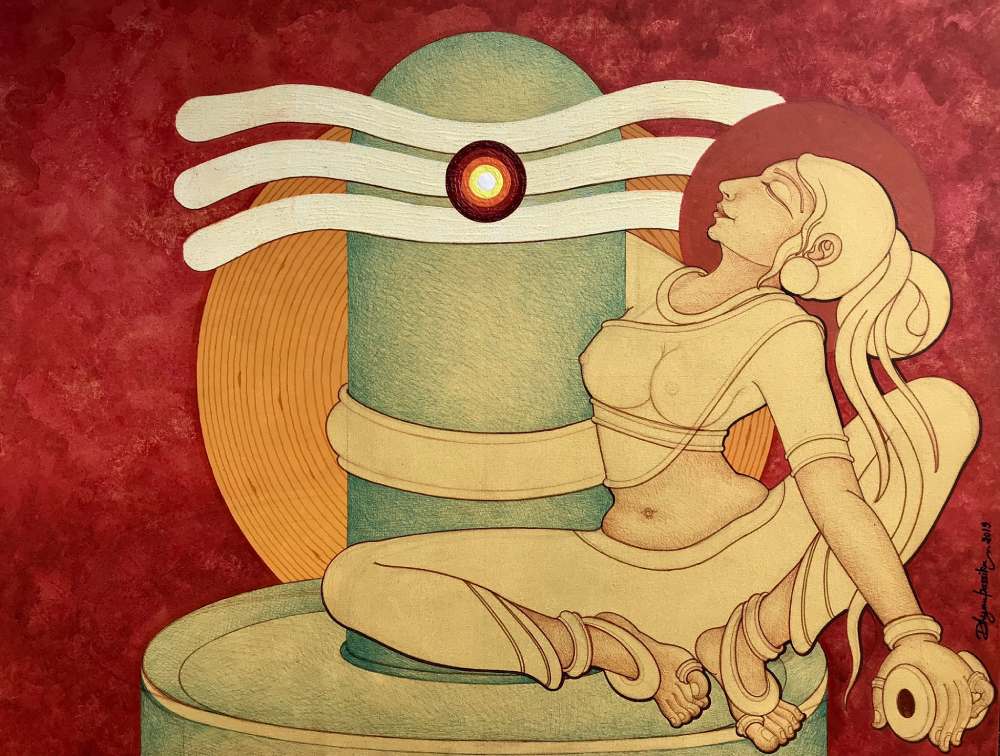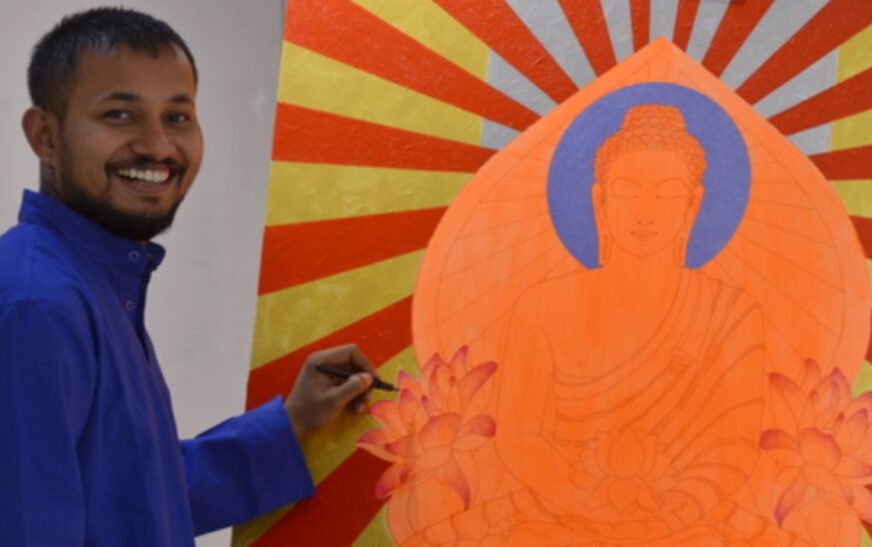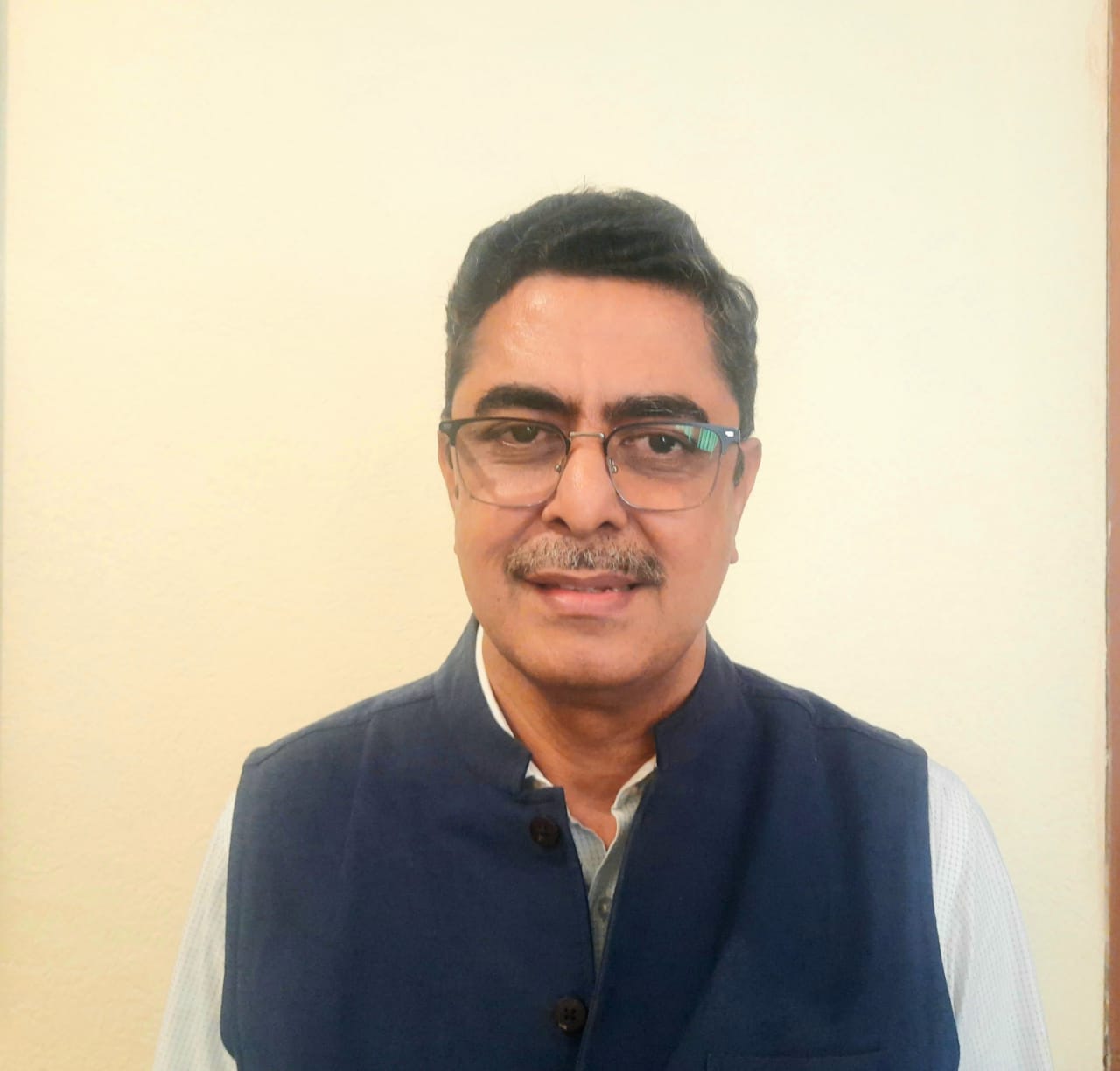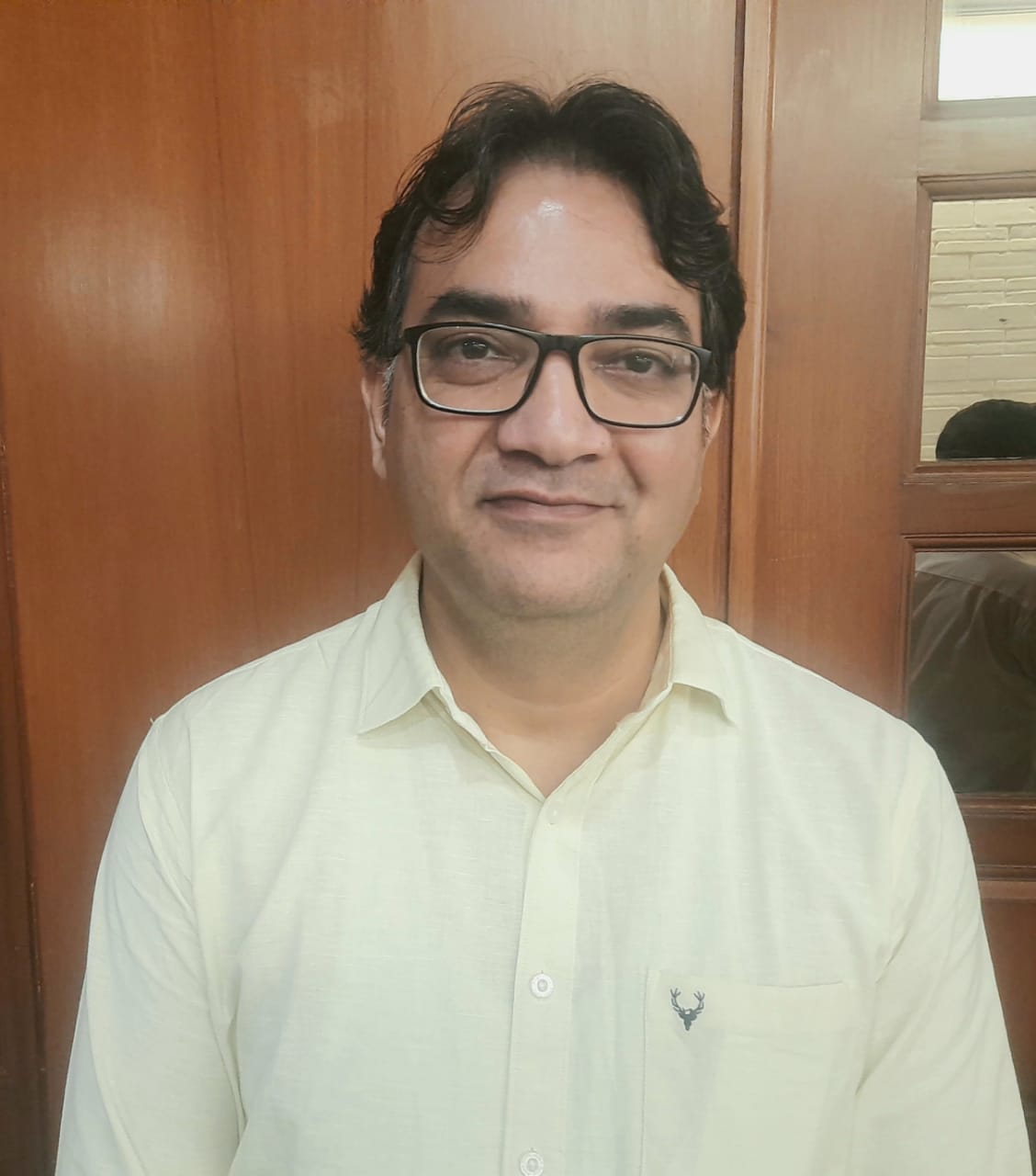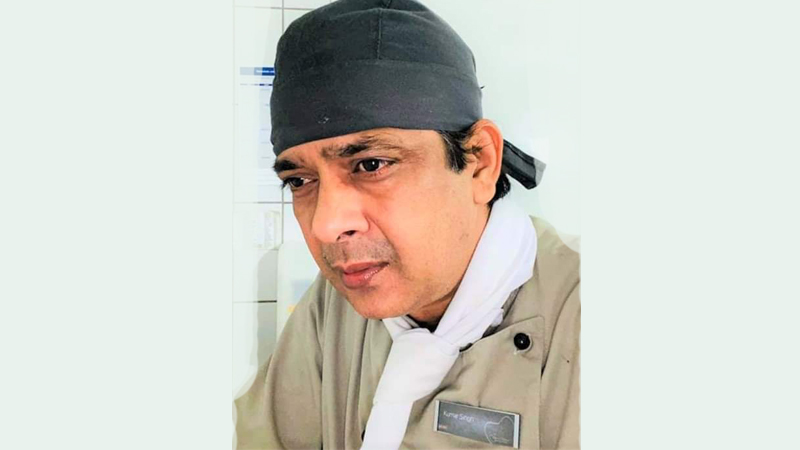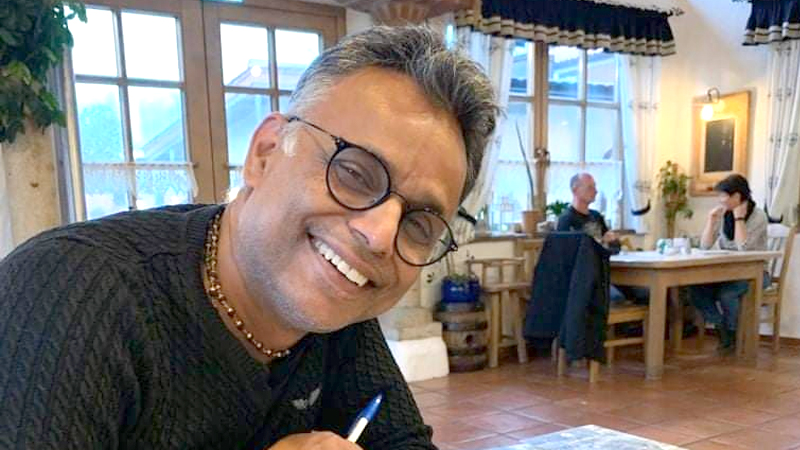Dhyan Passika stands as a visionary force in Indian art—a painter and sculptor who seamlessly fuses ancient spiritual wisdom with modern aesthetic sensibility. Born in Karnataka, he began sketching divine figures at the tender age of seven. This early act of devotion was no mere childhood pastime; it became the spiritual compass guiding his artistic destiny.
He later pursued temple architecture at Bangalore University, where he delved deep into the intricacies of sacred geometry, mythological ratios, and structural harmony. These elements continue to anchor his creative process, infusing each piece with a sense of cosmic order and timeless reverence.
Guided by both rigorous discipline and intuitive flow, Passika immersed himself in India’s architectural soul. He journeyed across the subcontinent—Karnataka, Hampi, Halebidu, Badami, Ajanta, and Ellora—sketchbook in hand, absorbing the spiritual energy etched into every carved stone. These temples became his living classrooms, nurturing a visual language rooted in devotion, precision, and transcendence.
A pivotal transformation occurred in 2008 when he encountered the teachings of Osho. In a gesture of spiritual rebirth, he adopted the name Dhyan—meaning meditation. This marked a profound inward turn. His practice evolved to incorporate mantra-infused Vipassana and esoteric yogic rituals. Today, he often meditates before approaching canvas or clay. The result: works that emanate inner stillness and sacred intensity—most notably seen in his 32 forms of Ganesha and the evocative Gayatri Mantra series.
By 2012, his commitment to divine imagery deepened into a singular focus. Since then, he has sculpted over 285 pieces and exhibited widely, both in India and abroad. His solo show at Mumbai’s Jehangir Art Gallery (2021) and his participation in the Times Square group exhibit in New York stand as testaments to his global resonance. Critics hail his oeuvre as “neo-spiritual”—a radiant confluence of form, hue, and mystic vibration that channels the soul of Bharatvarsh itself.
In an exclusive interaction with The Interview World, Dhyan Passika opens up about the divine muse that drives his artistic calling. He reflects on the moment Buddha became the heart of his expression, his subsequent evolution toward depicting Shiva-Parvati, and the vital role of art in weaving the fabric of cultural and spiritual diversity.
Here are the most illuminating takeaways from our conversation with the artist who breathes eternity into every stroke and chisel mark.
Q: What inspired you to explore or pursue spiritual art as a form of expression?
A: Guided by the profound teachings of Osho, I dismantled the clutter of my inner world and reassembled it with a boundless vision—expanding from the microscopic to the cosmic. Then, in a sublime reversal, I descended into the nectar of pure awareness—an enlightenment that defies articulation, existing beyond the grasp of language and nestled solely in experience.
Hours of deep meditation tore open the veil of illusion. I awakened into a radiant new reality, where the boundaries of thought dissolved and the infinite current of creativity surged forth. That current flowed through me—onto the canvas—transmuting itself into spiritual resonance, echoing through pigments and brushstrokes.
Colours became more than hues; they vibrated with consciousness. Tones intertwined with tenors, and reverbs danced in layered harmony. Together, they orchestrated a kaleidoscopic spectacle—a visual rhapsody, a transcendental theatre where spirit seduced form, and the divine played the role of a spiritual Casanova.
Q: At what point did the essence of Buddha begin to shape the core of your artistic expression?
A: Allow me to distill the intricate machinery of imagination into a moment of lucid expression. As I transcended the noise of the mundane and slipped into the stillness of meditation, a singular vision emerged—one that bathed my soul in the cosmic vibrations of tranquillity.
In that sacred silence, my mind surged toward enlightenment. The veil between self and spirit thinned, and instinctively, my imagination gravitated toward the serene form of Buddha—an eternal emblem of awakened being, resting in the sanctum of the infinite.
The profound equanimity woven through the Buddhistic scriptures did more than inspire; it mesmerized. Their calm conviction in the path of salvation became my anchor, my compass. Perhaps, that is the very raison principale—the fundamental force—that compels me toward the blank canvas.
There, in the emptiness, I begin again.
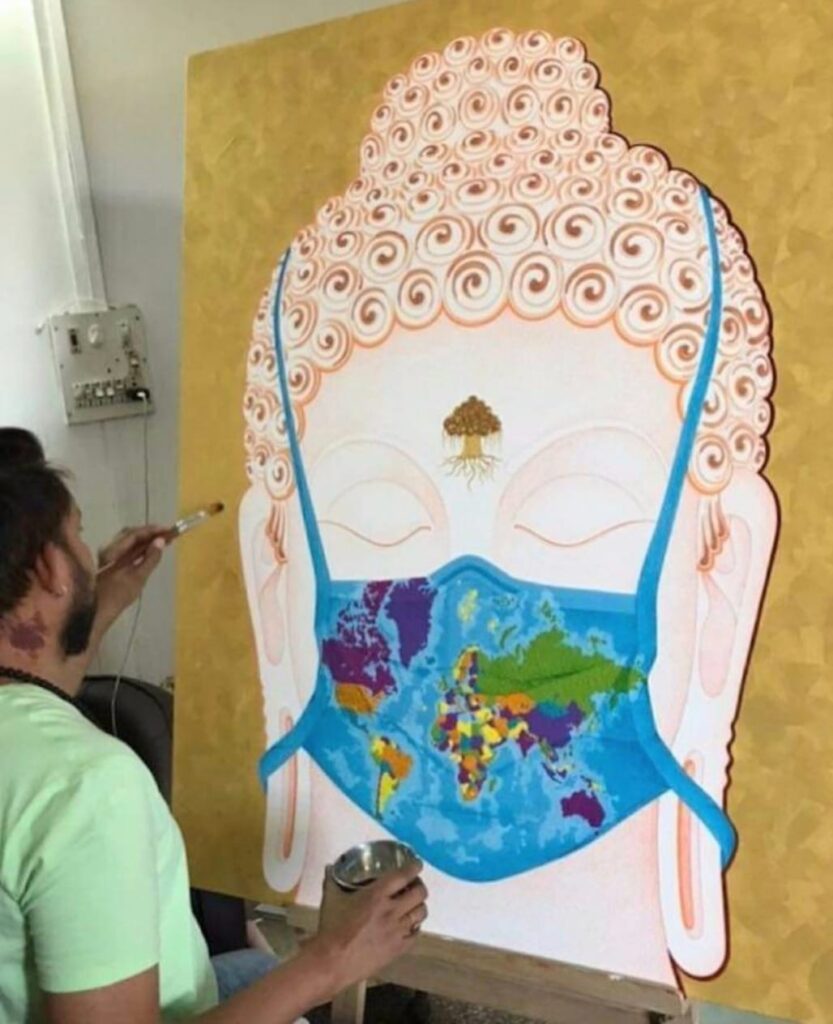
Q: What deeper meaning or symbolism did you intend to convey by masking Buddha?
A: We artists belong to the same tribe as you—rooted in society, shaped by its shifting tides. We witness the world as it unfolds, absorb its contradictions, and distill those truths into visual language. Masking Buddha is one such endeavour—a deliberate merging of social paradigm with the spiritual aether, where the tangible meets the transcendental.
Yet, I do not stop at mere reflection. In many of my works, I add a subtle flourish—a visual allure, a symbolic embellishment—that makes the narrative not just resonant, but also relatable. This aesthetic “icing” bridges the abstract with the real, inviting the viewer to both contemplate and connect.
Q: What stirred you to ricochet the divine duet of Shiva-Parvati in the cadence of your craft?
A: The universe pulses as the intelligent vibration of a boundless thought seed. Everything—animate or inanimate—emerges as a convergence of that primordial intellect. We are not separate from it; we are expressions of it.
Within this grand design, the transition from Buddha to Shiva-Parvati unfolds with striking dynamism, shaped by the tides of millennia. History and mythology intertwine here, revealing deeper layers of spiritual evolution. And at the heart of this continuum lies Varanasi—the eternal vortex where culture and consciousness meet in their most distilled form.
It was here, in Sarnath—just outside Varanasi—that Buddha first voiced his enlightenment to his disciples, as recorded in historical memory. And it is here too that Lord Shiva and Parvati dwell, anchoring the city in divine permanence.
This work emerges from that confluence. It is a visual meditation on the arc between Buddha and Shiva—a metaphysical bridge where silence meets cosmic dance. In this imagined realm, enlightenment does not end; it transforms, breathing through both figures whose legacies span history, myth, and the infinite.
Q: How do you perceive art as a thread that weaves together the tapestry of human diversity?
A: Art holds a transcendental allure—it fuses culture, society, norms, and the full spectrum of human emotion into a single, resonant force. More than expression, it becomes the most neutral yet profound language—an open invitation where countless thoughts converge and take enigmatic shape upon the canvas.
At its core, the artist’s mind is inherently inclusive. It gathers, absorbs, and distills, transforming the scattered fragments of experience into a cohesive visual symphony. Through this act of creation, art builds bridges—between identities, across histories, and within the realms of imagination.
Each brushstroke, each form, speaks of concord. It unites diverse origins, weaves together disparate visions, and offers a seamless narrative that transcends division. Ultimately, art delivers a singular, enduring message—one of cultural integrity, shared humanity, and timeless connection.
